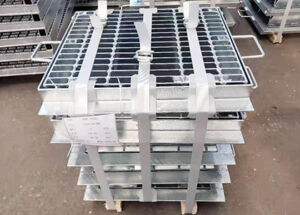Trench cover and walkway cover are two essential components in construction and infrastructure projects. Both serve different purposes and have their unique features and benefits. In this article, we will compare the ฝาปิดร่องลึก and walkway cover in terms of their design, material, application, and functionality to help you understand the differences between the two.
Trench covers are specifically designed to provide safe and secure covering for trenches, ditches, and excavations. They are commonly used in construction sites, roadworks, and utility maintenance to prevent accidents and injuries. Trench covers are usually made of durable materials such as steel, อลูมิเนียม, or composite materials to withstand heavy loads and harsh environmental conditions. On the other hand, walkway covers are designed to offer protection and access to pedestrians on sidewalks, pathways, and pedestrian bridges. They are often constructed with non-slip surfaces and corrosion-resistant materials to ensure safety and longevity for pedestrians.

When it comes to material, trench covers are typically made of heavy-duty materials such as steel or aluminum to support heavy loads and resist wear and tear. They are often reinforced with ribs, bars, or trusses to enhance strength and stability. Walkway covers, on the other hand, are constructed with lightweight yet durable materials such as fiberglass, plastic, or composite materials. These materials are chosen for their corrosion resistance, low maintenance, and ease of installation. The choice of material for trench covers and walkway covers depends on the specific application, load requirements, and environmental factors.
In terms of application, trench covers are commonly used in construction, roadworks, and excavation projects to provide temporary or permanent covering for open trenches and excavations. They are essential for ensuring safety for workers, vehicles, and equipment on the construction site. Walkway covers, on the other hand, are widely used in public areas, commercial buildings, and industrial facilities to protect pedestrians from hazards such as open pits, stairwells, and machinery. They are designed to offer safe passage for pedestrians while providing access to utility services and maintenance points.

Functionality is another key aspect to consider when comparing trench covers and walkway covers. Trench covers are designed to support heavy loads such as vehicular traffic, construction equipment, and heavy machinery. They are engineered to meet specific load ratings and safety standards to ensure reliable performance in demanding environments. Walkway covers, on the other hand, are intended for pedestrian use and are designed to provide slip-resistant, secure footing for pedestrians in both dry and wet conditions. They are often equipped with features such as anti-slip surfaces, drainage channels, and visibility markings to enhance safety and usability for pedestrians.
In summary, trench covers and walkway covers are essential components in construction and infrastructure projects, each serving a distinct purpose and offering unique features and benefits. Trench covers are designed to provide safe covering for trenches and excavations in construction and roadworks, while walkway covers are intended to offer protection and access for pedestrians in public areas and industrial facilities. Understanding the differences in design, material, application, and functionality will help you choose the right cover for your specific needs and requirements.

